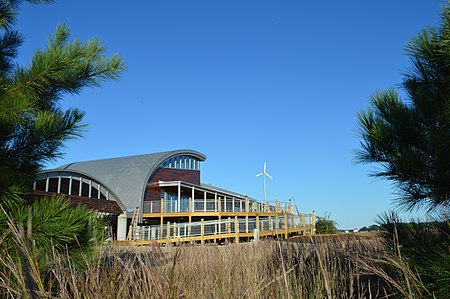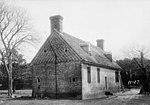Brock Environmental Center
Buildings and structures in Virginia Beach, VirginiaEnvironmental education in the United StatesPages with non-numeric formatnum argumentsSustainable buildings in the United States

The Chesapeake Bay Foundation's (CBF) Brock Environmental Center is located on the banks of the Lynnhaven River in Virginia Beach, Virginia. It is designed to meet the highest environmental standards in accordance with The U.S. Green Building Council's Leadership in Energy and Environmental Design and the Living Building Challenge. Home to CBF's Hampton Roads staff and local conservation group, Lynnhaven River NOW, the Brock Center will benefit the larger public with spaces indoors and out for community and student groups.
Excerpt from the Wikipedia article Brock Environmental Center (License: CC BY-SA 3.0, Authors, Images).Brock Environmental Center
Marlin Bay Drive, Virginia Beach
Geographical coordinates (GPS) Address Nearby Places Show on map
Geographical coordinates (GPS)
| Latitude | Longitude |
|---|---|
| N 36.9039 ° | E -76.0979 ° |
Address
Marlin Bay Drive 3606
23455 Virginia Beach
Virginia, United States
Open on Google Maps






